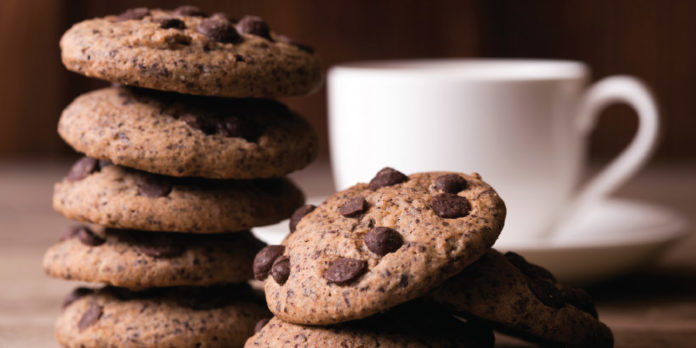Will health guidelines designed to cut our sugar consumption affect our love of sweet treats? Joseph Lee finds out
Britain has a reputation for being obsessed with biscuits. We have the world’s highest consumption per head and 99% of our households bought them last year.
But along with cakes and desserts, our love for biscuits could face a challenge from Public Health England’s guidelines to reduce sugar content by 20% before 2020. The market will have to adapt to new recipes and new pack sizes, as well as changes in public opinion about sugar.
A survey by Pladis, the maker of McVitie’s, suggests our passion for sweet treats will weather the change well: 29% of Brits said they’d rather give up using Facebook than biscuits; 26% would rather give up alcohol; and 3% would even prefer to give up their bonus.
Pladis and others suggest there’s still room for growth in the £2.4bn category. We spoke to experts to find out about the new occasions, formats and opportunities for premiumisation that could generate additional sales for wholesalers of biscuits, cakes and desserts.
Addressing health concerns
 Despite our weakness for biscuits and cakes, Britons are concerned about sugar, and are interested in discovering healthier alternatives.
Despite our weakness for biscuits and cakes, Britons are concerned about sugar, and are interested in discovering healthier alternatives.
“A trend for the category to be aware of is the move towards lighter, healthier, or even smaller portion options as shoppers strive to make more health-conscious food decisions,” says Steve Kelly, channel director at Premier Foods, which makes cakes under the Mr Kipling and Cadbury brands. “Cake is to be enjoyed as part of a balanced diet, and the sector’s growth in convenience shows there is an appetite for the sweet treat as a permissible snack.”
According to Pladis’ research, more than half of snackers – 54% – say they are interested in healthier versions of their favourite foods. A similar proportion say they would like to try products sweetened with sugar alternatives, such as honey. But there’s confusion, too, driven by the conflicting health advice that consumers receive: 47% say that it’s hard to know which snacks are healthy, Pladis’ research found.
Even so, healthier biscuits have already grown to be the biggest single sub-category, with £511m sales equating to 21% of the market share.
Pladis says that it is planning to address the issue through recipe changes and, predominantly, portion control – particularly through the use of single-serve packs.
Healthy eating isn’t just about sugar, though. There are also opportunities to sell biscuits, cakes and desserts addressing other dietary requirements, like vegan and gluten-free treats.
Far from being the preserve of a few specialist brands, gluten-free products are big business – 55% of customers say that they are open to purchasing gluten-free food. The launch of McVitie’s Gluten-Free Hobnobs, for example, proves that it’s a category that has hit the mainstream.
Smaller and lighter snacks
The same trends are having an effect in foodservice, with consumers tending to prefer more modest portions and desserts that are not too rich.
For Jon Turonnet, foodservice sales manager at French baker and pâtissier Brioche Pasquier, that preference has been driving the sales of dainty products such as his brand’s most popular product, macarons, and petits fours.
“The trend for smaller, lighter desserts is served perfectly by these products, and they are so versatile,” he says. “Wholesale customers have a wide range of uses for them, from afternoon tea to sweet sharing platters to accompaniments to a morning coffee, and they are ideal for serving at events.”
The appeal of a light dessert has also helped create a lasting trend for entremets – multi-layered mousse cakes with different flavours and textures. “Entremets were one of the breakout trends of last year and are still a very fashionable offering,” he says. “The combinations of taste and texture possible with these continental desserts are delicious, and the layering and finish of beautifully-made entremets is a fine example of the skill of the pastry chef.”
Still, although lighter desserts are booming, there’s one rich flavour that shows no sign of going away: “Chocolate is still king of the dessert menu,” Turonnet notes.
He suggests that wholesalers looking to boost sales of desserts to foodservice should focus on tastings in-depot, while offering simple service ideas. Quality products will drive sales and tastings help catering customers appreciate the difference. “Do not fall into the trap of thinking that all macarons taste the same, or that one lemon tart is the same as another,” he says.
Biscuits sales are going premium
More traditional biscuits – plain digestives, Hobnobs and rich tea – suffered a sharp decline last year, losing 6.7% of sales. This was partly caused by the ‘Great British Biscuit Shortage’ – Storm Desmond closed Pladis’ Carlisle factory, sending Bourbons, Custard Creams and Ginger Nuts stocks plummeting, leaving biscuit-lovers bereft.
But manufacturers also see a long-term trend, with consumers shifting to more premium products with fillings and chocolate coatings. “While biscuit sales are currently fairly flat, we are noticing that consumers now prefer to treat themselves with a good quality premium biscuit, rather than an everyday variety,” says Lesley Ann Grey, brand and innovation director at Border Biscuits.
For instance, Oreos have surged in popularity in the UK, growing by 20% to take 6% of the £385m ‘everyday treat’ category. And the ‘special treat’ category has shown marked growth, with a 5.6% rise to £181m in sales.
But that doesn’t mean that wholesalers should neglect the basics. Pladis has launched a new 89p pricemarked everyday biscuit range, launched last year exclusively for the convenience channel.
It aims to offer improved cash and percentage margins for wholesalers and retailers alike, maintaining the importance of Britain’s traditional favourites.
Snacking and sharing
The biggest launch of last year was McVitie’s Chocolate Digestive Nibbles, which immediately notched up nearly £10.3m in sales. It struck a chord in the market and other manufacturers have taken notice, with a surge in new formats to make it easier to snack on the go or share a treat on a night in. The next step has been the launch of smaller Nibbles Handy Packs for snacking – with only 7% of biscuit products currently in on-the-go formats, Pladis believes it’s a major opportunity for growth.
Border Biscuits’ Grey agrees: “The snacking market has grown significantly in the past few years, with busier lifestyles creating a demand for food on the go in convenient formats,” she says.
Among the manufacturers following suit with their own bitesized biscuit format is Burton’s Biscuit Company, which launched Maryland Cookie Bites earlier this year in the sharing size responsible for 88% of sales on Big Nights In.
“With the launch of Maryland Cookie Bites, we’re meeting the growth in consumer demand for ‘treatier’ biscuits that can be enjoyed as part of a night in,” says David Costello, the company’s head of category and shopper management. “Biscuit shoppers are highly impulsive and are increasingly looking for an indulgent evening treat that can be shared with family or friends at home.”
The cake market is also changing formats to fit the contemporary lifestyles of shoppers. Premier Foods launched its Cake on the Go range last year, with Mr Kipling Lemon, Chocolate and Angel Slices, Cherry Bakewells, and Cadbury Mini Rolls. The twin packs are aimed at appealing to customers looking for portion control as well as convenience. “Where the cakes and biscuits category has in the past been driven by the take-home occasion, our Cake on the Go range is helping wholesalers and retailers capitalise on this change in consumer behaviour,” says Premier’s Kelly.
Maximising sales in the depot
The impulse channel is where the growth in biscuits can be found, says Burton’s Costello. So merchandising the products correctly can have a big impact: one-third of all biscuits are bought in convenience stores. “The really good news for cash & carries and wholesalers is that demand for biscuits in the impulse channel is growing faster than the total market,” he says. “To capitalise on this, cash & carries need to take into account why people are shopping the biscuit fixture and ensure retailers can pick up the leading brands that their shoppers are looking for.”
Pladis has identified an £88m growth opportunity in convenience for biscuits and three years ago, it began working with wholesalers to try to capture it.
Among the lessons it has identified are the importance to retailers of having good category advice in the depot and making prices easy to see, with profit on return, case price and promotion detail all clearly displayed.
Manufacturers are increasingly focusing on pricemarked packs, with McVitie’s Nibbles aiming for the crucial £1 mark, and Premier Foods introducing pricemarks on Mr Kipling and Lyons cakes.
And the lessons identified by Pladis seem to work: depots that worked with the company saw sales increase by 3%, proving that there is still growth in the category.
Viewpoints
 “I know it sounds awful, but the concerns about sugar haven’t affected people at all. Obviously some people are looking after their weight, but others, if they want a chocolate biscuit, they want a chocolate biscuit. When it comes to new products, there isn’t much that stands out except those little grab bags of Mini-Digestives.”
“I know it sounds awful, but the concerns about sugar haven’t affected people at all. Obviously some people are looking after their weight, but others, if they want a chocolate biscuit, they want a chocolate biscuit. When it comes to new products, there isn’t much that stands out except those little grab bags of Mini-Digestives.”
Justin Whittaker, MJ’s Premier, Oldham
 We’re in a village in the Peak District, and we have a lot of walkers and cyclists, who like to fuel up as they need the energy. But there is definitely a trend that people are more health-conscious and they want to know the provenance of things. We do a lot of gluten-free and we’ve developed a vegan cake that’s really popular.”
We’re in a village in the Peak District, and we have a lot of walkers and cyclists, who like to fuel up as they need the energy. But there is definitely a trend that people are more health-conscious and they want to know the provenance of things. We do a lot of gluten-free and we’ve developed a vegan cake that’s really popular.”
Sara Price, Village Green Café, Eyam, Derbyshire








